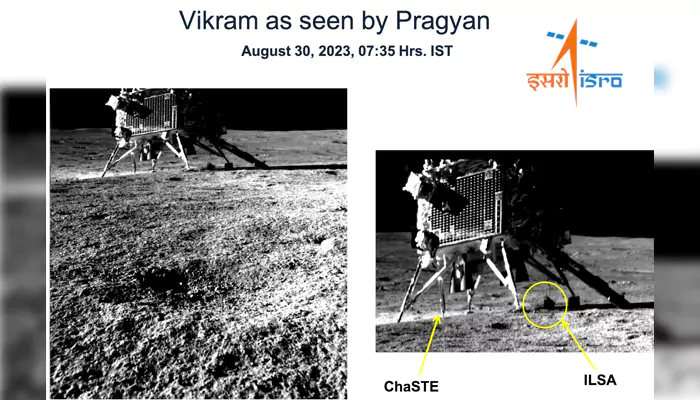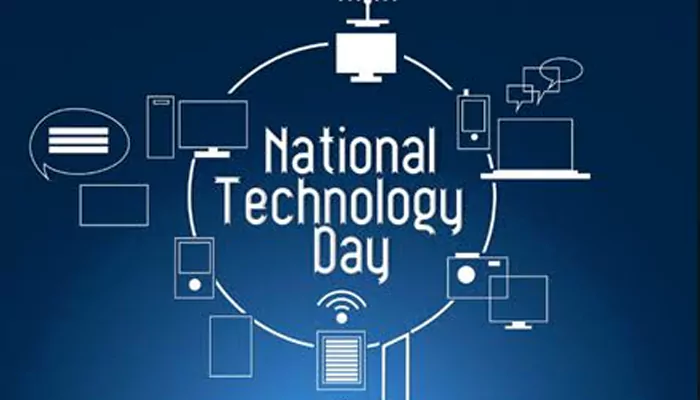One Year to Chandrayaan-3 Landing: Key Findings to Enduring Legacy in Space Exploration
- Soham Halder
- 1 year ago
- 4 minutes read

India became the first country to land any spacecraft on the uncharted territory of south polar region with the Chandrayaan-3 on August 23, 2023.
"We have achieved soft landing, India is on the Moon" these words by chief of the Indian Space Research Organisation (ISRO), S Somnath, will go down in the history books. This massive feat was not only a testament to ISRO's capabilities but also a ray of hope for a nation that has long aspired to become the part of elite club in space exploration. As India is celebrating one year to this massive achievement, let's discuss key findings from first-ever lunar landing of spacecraft by ISRO.
Major Insights:
The follow-on mission to Chandrayaan-2, Chandrayaan-3 was aimed to “demonstrate end-to-end capability in safe landing and roving on the lunar surface,” according to ISRO website. It was a culmination of extensive planning and implementation, making India as only the fourth country to achieve the soft landing on the Lunar surface, followed by the United States, the Soviet Union, and China.
Chandrayaan-3 mission performed various scientific discoveries, like confirming the occurrence of sulfur on the Moon and developing the first temperature-depth profile of the south polar region in the Moon.

(Credit - @isro X handle)
Temperature:
On August 27, the ISRO scientists revealed that “high temperatures were recorded on the moon”. The space agency said that “Chandra's surface thermophysical experiment (ChaSTE) payload onboard the Vikram lander analyzed the temperature profile of the lunar topsoil to understand the thermal behaviour of the lunar surface.”
ISRO researcher B H M Darukesha said, "We all believed that the temperature could be somewhere around 20 degrees to 30 degrees on the surface, but it is 70 degrees. This is surprisingly higher than what we had expected."
Meanwhile, this data will be helpful in crewed moon mission.
Different Elements on the Lunar Surface:
On August 30, the laser-induced breakdown spectroscope instrument onboard the Pragyan rover confirmed the presence of sulphur on the lunar surface near the South Pole.
Other elements detected on the lunar surface are aluminium, calcium, iron, chromium, titanium, manganese, silicon, and oxygen (O).
The space agency said that the search for hydrogen (H) is currently underway.
Chandrayaan-3 Mission:
— ISRO (@isro) September 2, 2023
🏏Pragyan 100*
Meanwhile, over the Moon, Pragan Rover has traversed over 100 meters and continuing. pic.twitter.com/J1jR3rP6CZ
(Credit - @isrobX handle)
Shiv Shakti Point:
On August 26, Indian Prime Minister Narendra Modi announced that the soft landing spot of the Chandrayaan-3 Vikram lander will be named as "Shiv Shakti Point". The site of crash-landing of the Chandrayaan-2 lander (in 2019) would be regarded as "Tiranga Point".
Laurie Leshin, Director of National Aeronautics and Space Administration or NASA's Jet Propulsion Laboratory, lauded the effort of ISRO: "We are so impressed with Chandrayaan-3 and the future plans for Indian space exploration, and we look forward to having many more partnerships between NASA and ISRO. The respect for India's space programme - it was already very high because India has accomplished so much in space - but now it's off the charts.”
What's Next?
A team led by Santosh Vadawale from the Physical Research Laboratory (PRL) in Ahmedabad has recently revealed new findings about the lunar surface near the Shiv Shakti Point.
Chandrayaan-3 Mission:
— ISRO (@isro) August 26, 2023
🔍What's new here?
Pragyan rover roams around Shiv Shakti Point in pursuit of lunar secrets at the South Pole 🌗! pic.twitter.com/1g5gQsgrjM
(Credit - @isro X handle)
The study revealed that landing site comprising ferroan anorthosite rock, which is basically a product of the lunar magma ocean (LMO) crystallisation. This further supports the famous “lunar magma ocean (LMO)” hypothesis. According to this concept, the “Moon's mantle formed as heavier materials sank inward while lighter rocks floated to the surface.”
The scientists detected Mg-rich materials indicating a combination of outer crustal material along with deeper lunar layers.
ISRO chief S Somanath confirmed launch of Chandrayaan-4 in 2028. ISRO's groundbreaking efforts remind us that the space exploration is not just a frontier for the few but a it's definitely a domain of possibilities for the humanity.












